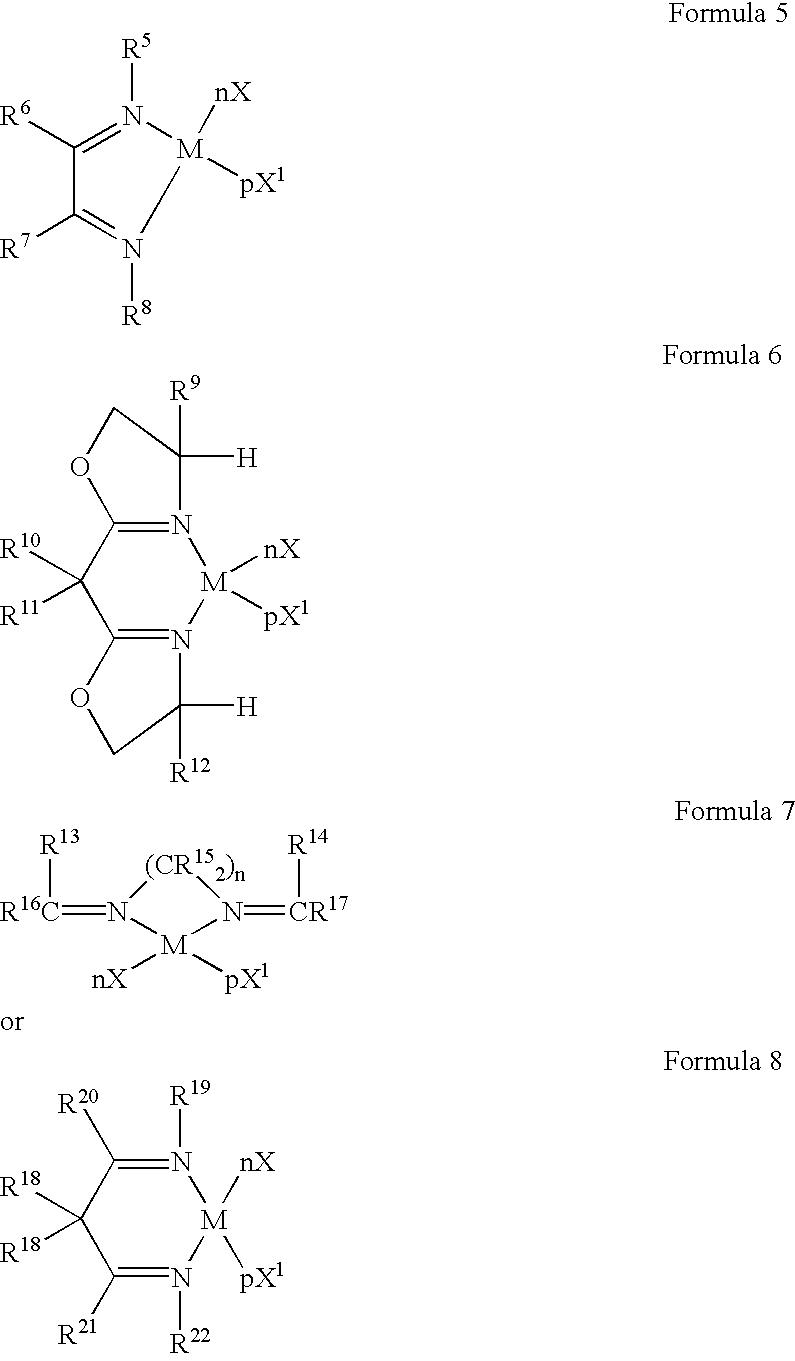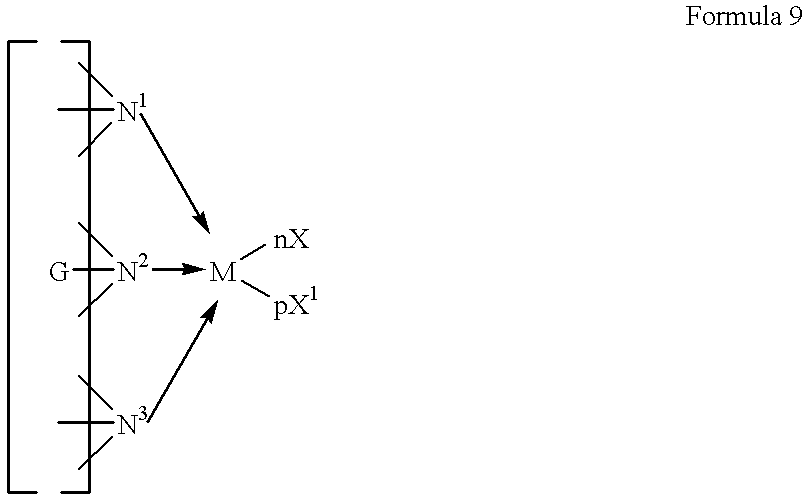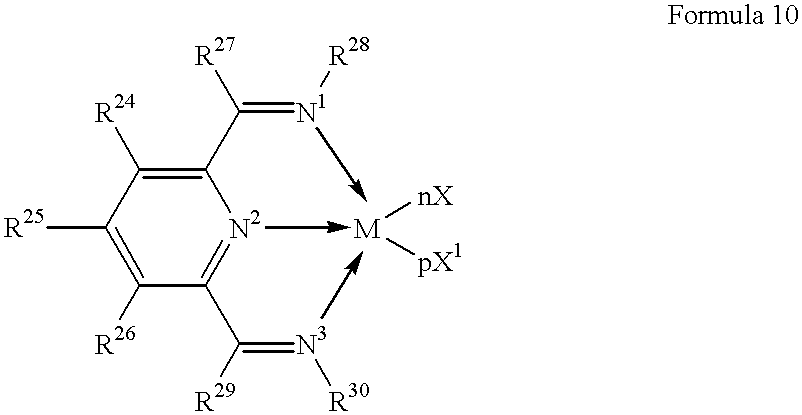Oligomer oils and their manufacture
a technology of oligomer oils and olefins, applied in the field of oligomer oils, can solve the problems of high percentage of dimers, lack of control over chemistry, and isomerization of alpha olefins to internal olefins
- Summary
- Abstract
- Description
- Claims
- Application Information
AI Technical Summary
Benefits of technology
Problems solved by technology
Method used
Image
Examples
example 1
A 2-liter Parr reactor under nitrogen was charged with 1096 g of dry 1-decene and was taken to 65.degree. C. with stirring. The catalyst was prepared by pre-mixing for 10 minutes a solution of 37.0 mg of bis(cyclopentadienyl)zirconium dichloride in 20 mL of toluene with 38.9 mL of a solution of methylaluminoxane (MAO) in toluene (10 wt % in toluene, d=0.860 g / mL, 5.08 wt % Al). The catalyst solution was injected to the Parr reactor using an injection vessel. The reaction was stirred at temperature (65.degree. C.) for 3 hours and then quenched by pouring the content into a quench vessel containing 200 mL of 2N NaOH and the organic layer was washed. The organic layer was subsequently washed with distilled water (2.times.200 mL) and dried over MgSO.sub.4. Removal of unreacted decene under reduced pressure resulted in isolation of 948.5 g of a clear fluid. Further distillation of this fluid under reduced pressure resulted in isolation of 294.1 g (31.0%) of the dimeric C20 fluid having g...
example 2
This experiment was conducted in a manner identical to Example 1 with the exception of polymerization temperature being at 75.degree. C. After quench and washing, removal of unreacted decene under reduced pressure resulted in isolation of 941.8 g of a clear fluid. Further distillation of this fluid under reduced pressure resulted in isolation of 369.4 g (39.2%) of the dimeric C20 fluid having greater than 80% vinylidene by NMR. Once the dimer was removed, the bottom fraction was hydrogenated under a set of standard hydrogenation conditions (at 170.degree. C., 400 psi hydrogen, using Ni on Kieselguhr catalyst) to produce a high viscosity index (VI) synthetic basestock having the following properties:
example 3
This experiment was conducted in a manner identical to Example 1 with the exception of polymerization temperature being at 100.degree. C. After quench and washing, removal of unreacted decene under reduced pressure resulted in isolation of 908.6 g of a clear fluid. Further distillation of this fluid under reduced pressure resulted in isolation of 475.8 g (52.4%) of the dimeric C20 fluid having greater than 80% vinylidene by NMR. Once the dimer was removed, the bottom fraction was hydrogenated under a set of standard hydrogenation conditions (at 170.degree. C., 400 psi hydrogen, using Ni on Kieselguhr catalyst) to produce a high viscosity index (VI) synthetic basestock having the following properties:
PUM
| Property | Measurement | Unit |
|---|---|---|
| temperature | aaaaa | aaaaa |
| partial pressure | aaaaa | aaaaa |
| partial pressure | aaaaa | aaaaa |
Abstract
Description
Claims
Application Information
 Login to View More
Login to View More - R&D
- Intellectual Property
- Life Sciences
- Materials
- Tech Scout
- Unparalleled Data Quality
- Higher Quality Content
- 60% Fewer Hallucinations
Browse by: Latest US Patents, China's latest patents, Technical Efficacy Thesaurus, Application Domain, Technology Topic, Popular Technical Reports.
© 2025 PatSnap. All rights reserved.Legal|Privacy policy|Modern Slavery Act Transparency Statement|Sitemap|About US| Contact US: help@patsnap.com



